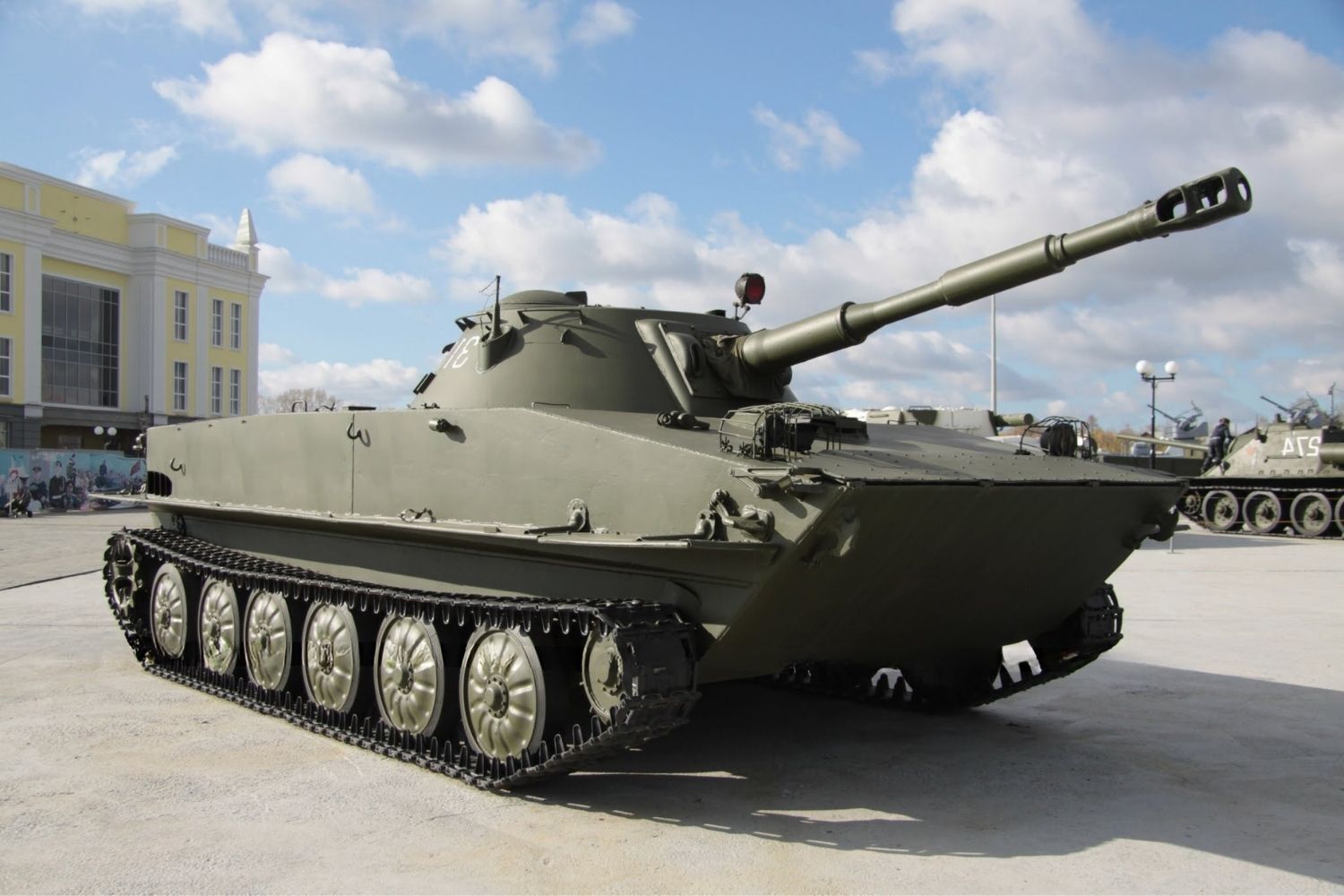
The PT-76 is a Soviet amphibious light tank that has captured the interest of military enthusiasts and historians alike. Developed in the early 1950s, this tank is known for its versatility and unique design. But what makes the PT-76 stand out? Its ability to traverse both land and water sets it apart from many other tanks of its era. Used by various countries around the world, the PT-76 has seen action in numerous conflicts, showcasing its durability and adaptability. Whether you're a history buff or just curious about military technology, these 30 facts about the PT-76 will give you a deeper understanding of this fascinating vehicle.
The PT-76: An Overview
The PT-76 is a Soviet amphibious light tank that saw extensive use during the Cold War. Its unique design and capabilities made it a versatile vehicle for various military operations.
-
Amphibious Capability: The PT-76 can traverse water bodies, thanks to its built-in water jets and buoyant hull design.
-
Soviet Origin: Developed in the Soviet Union, it entered service in 1951 and became a staple in many Warsaw Pact armies.
-
Lightweight Design: Weighing around 14 tons, it is significantly lighter than most main battle tanks, enhancing its mobility.
-
Armament: Equipped with a 76.2mm D-56T rifled gun, it can engage both armored and soft targets effectively.
-
Secondary Armament: It also features a 7.62mm SGMT coaxial machine gun for additional firepower.
Design and Features
The PT-76's design focuses on versatility and adaptability, making it suitable for various combat scenarios.
-
Crew Size: Operated by a crew of three—commander, driver, and gunner.
-
Engine: Powered by a V-6 6-cylinder diesel engine, providing 240 horsepower.
-
Speed: Capable of reaching speeds up to 44 km/h on land and 10 km/h in water.
-
Armor: Its armor ranges from 6mm to 14mm, offering protection against small arms fire and shell splinters.
-
Turret: The turret can rotate 360 degrees, allowing for flexible targeting.
Operational History
The PT-76 has seen action in numerous conflicts, showcasing its reliability and effectiveness.
-
Vietnam War: Used extensively by North Vietnamese forces during the Vietnam War.
-
Six-Day War: Employed by Egyptian forces in the 1967 Six-Day War against Israel.
-
Indo-Pakistani Wars: Both India and Pakistan used PT-76 tanks during their conflicts in the 1960s and 1970s.
-
Angolan Civil War: Deployed by Cuban forces supporting the MPLA government.
-
Middle East: Various Middle Eastern countries, including Syria and Iraq, have used the PT-76 in their military operations.
Variants and Modifications
Over the years, several variants and modifications of the PT-76 have been developed to meet different operational needs.
-
PT-76B: An improved version with a more powerful engine and enhanced fire control systems.
-
Type 63: A Chinese variant with a different turret and armament configuration.
-
OT-62 TOPAS: A Czechoslovakian armored personnel carrier based on the PT-76 chassis.
-
BTR-50: An armored personnel carrier variant used by Soviet and Warsaw Pact forces.
-
PT-76M: A modernized version with upgraded armor and electronics.
Global Influence
The PT-76's design and capabilities have influenced tank development worldwide.
-
Exported Widely: Exported to over 25 countries, including India, Indonesia, and North Korea.
-
Training: Used for training purposes in several countries due to its amphibious capabilities.
-
Influence on Design: Inspired the development of other amphibious tanks and armored vehicles globally.
-
Museums: Many military museums around the world display PT-76 tanks as part of their collections.
-
Legacy: Despite being outdated by modern standards, it remains a symbol of Cold War-era military engineering.
Technical Specifications
Understanding the technical specifications of the PT-76 provides insight into its operational capabilities.
-
Dimensions: Measures 7.63 meters in length, 3.14 meters in width, and 2.21 meters in height.
-
Range: Has an operational range of 370 kilometers on land and 100 kilometers in water.
-
Suspension: Features a torsion bar suspension system for improved mobility over rough terrain.
-
Fuel Capacity: Holds up to 250 liters of fuel, allowing for extended operational periods.
-
Communication: Equipped with a radio system for effective communication during missions.
Final Thoughts on the PT-76
The PT-76 stands out as a remarkable piece of military history. Its amphibious capabilities and lightweight design made it a versatile asset in various terrains. Despite its light armor, the tank's mobility and ease of transport gave it an edge in many operations. The PT-76 saw action in numerous conflicts, proving its worth time and again. Its legacy continues to influence modern tank designs, showcasing the importance of innovation in military technology. Understanding the PT-76 offers insights into the evolution of armored warfare and the strategic value of amphibious vehicles. Whether you're a history buff or a military enthusiast, the PT-76 remains a fascinating subject worth exploring. Its story is a testament to the ingenuity and adaptability of military engineering.
Was this page helpful?
Our commitment to delivering trustworthy and engaging content is at the heart of what we do. Each fact on our site is contributed by real users like you, bringing a wealth of diverse insights and information. To ensure the highest standards of accuracy and reliability, our dedicated editors meticulously review each submission. This process guarantees that the facts we share are not only fascinating but also credible. Trust in our commitment to quality and authenticity as you explore and learn with us.
